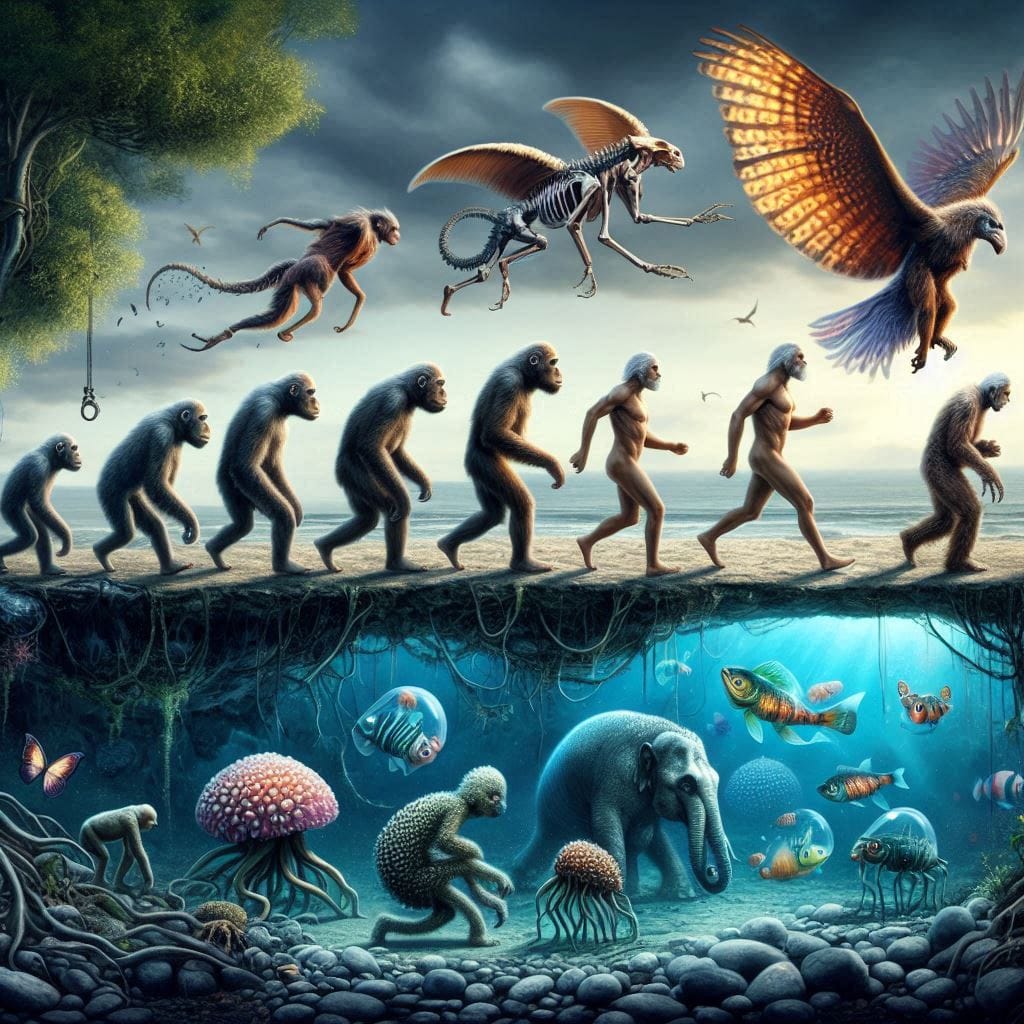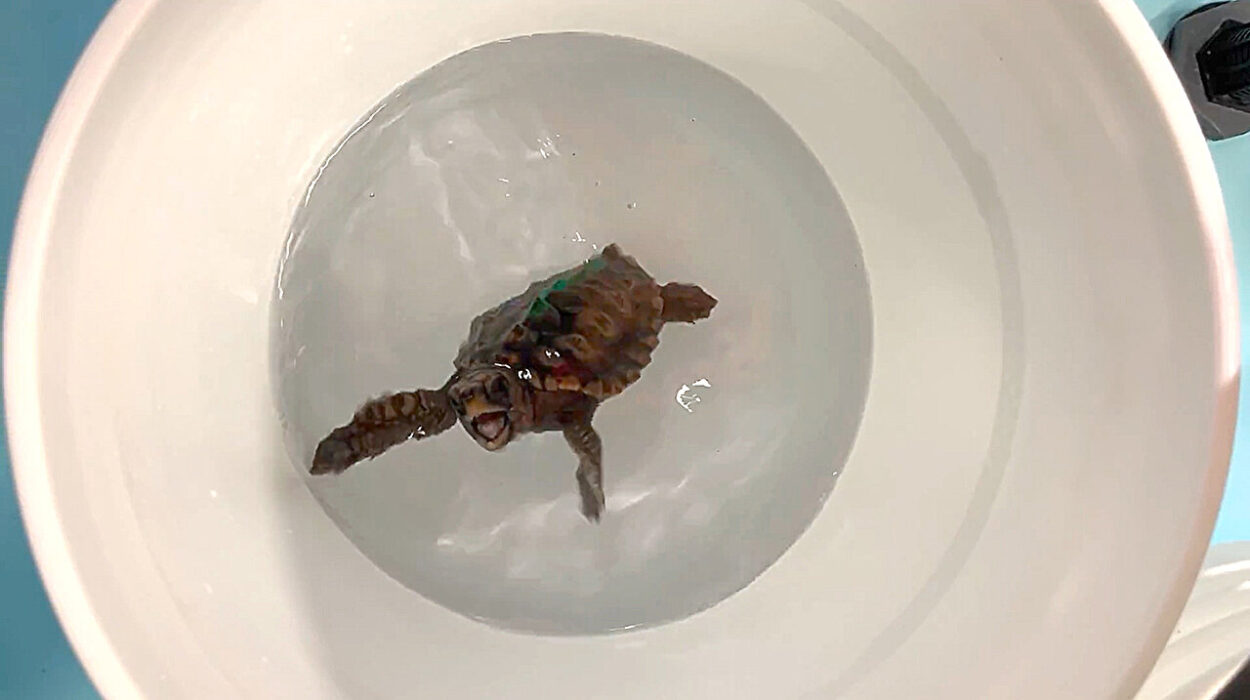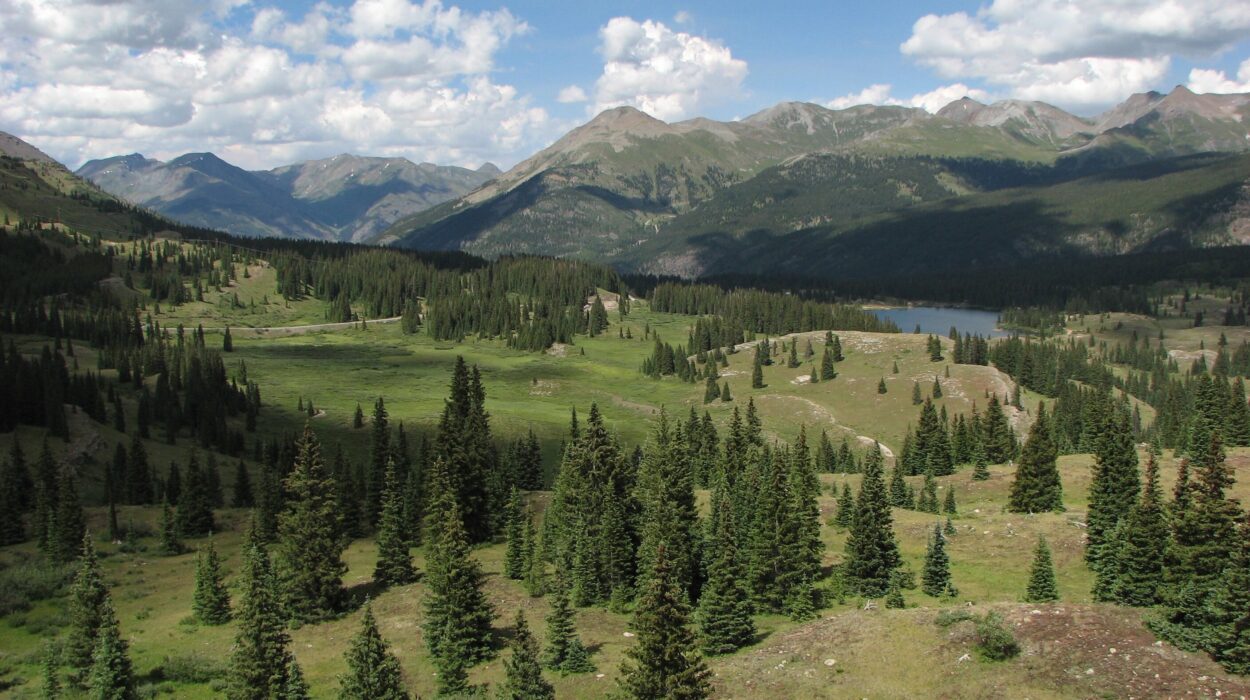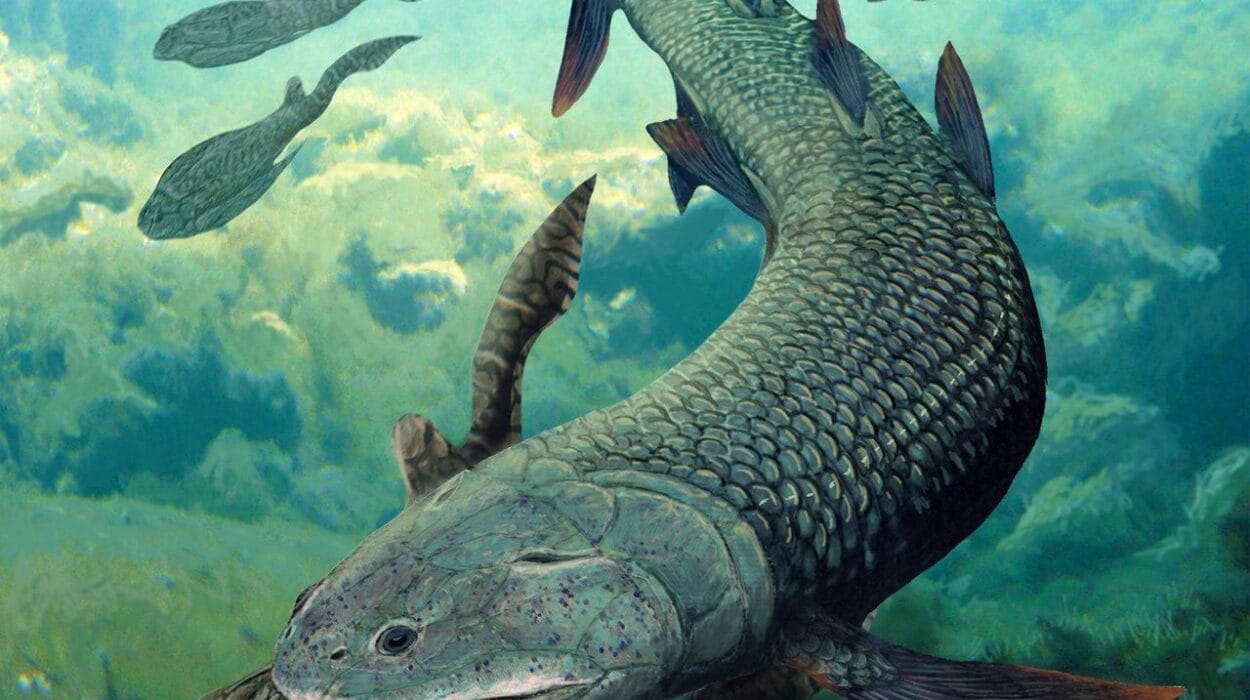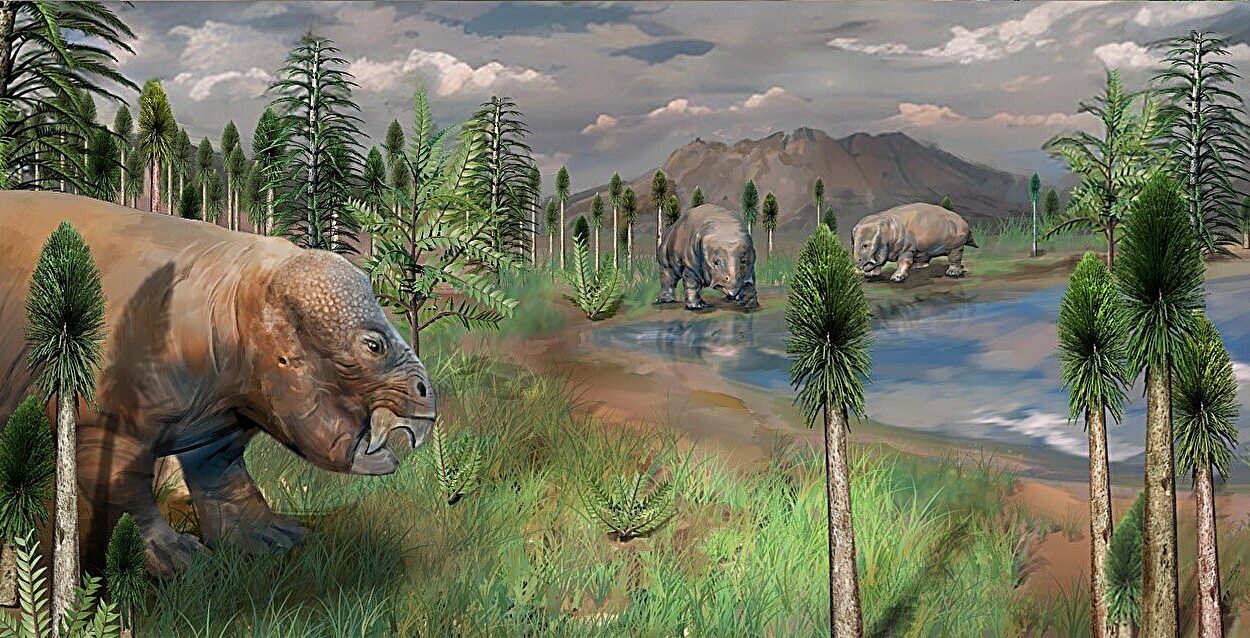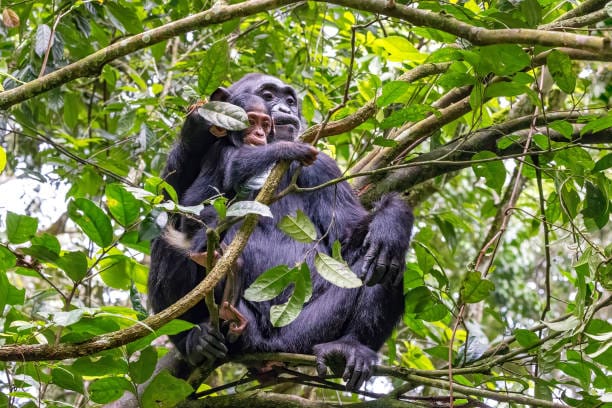Evolution is not merely a distant echo from the ancient past. It’s not confined to fossils or ancient bones entombed in rock. It’s not just a theory that explains how fish became amphibians or apes became humans. Evolution is alive. It breathes, shifts, and sculpts life all around us—every single day.
To many, evolution seems like a slow, glacial process: something that unfolds over eons, invisible in the span of a human life. But for those who know where to look, the truth is more dynamic, more thrilling, and infinitely more immediate. We are surrounded by life adapting, struggling, and changing in real time. Some changes take decades, others mere years or even months. Evolution, far from being static or solely historical, is a living engine of transformation.
In the wild, under the sea, in city streets, on mountaintops, and even inside hospitals and your own body, evolution is unfolding right now. These are not simply scientific curiosities—they are the stories of life’s resilience, creativity, and brilliance in responding to the ever-shifting pressures of the environment.
To see evolution in action is to witness nature thinking on its feet.
The Battle Against Antibiotics
Few processes illustrate evolution more urgently and starkly than the rise of antibiotic-resistant bacteria. In the microscopic world, survival is a daily battle. For bacteria, the presence of antibiotics is not just an inconvenience—it’s a deadly threat. But life, even at its smallest, does not surrender easily.
Every time a person takes antibiotics, those drugs attack and kill the bacteria susceptible to them. But if, by genetic luck, a few bacteria possess mutations that allow them to survive—whether by breaking down the drug, expelling it, or simply withstanding its effects—those survivors live to reproduce. They pass on their resistance, and the next generation is more robust.
This cycle repeats with every prescription written. Bacteria evolve so rapidly that entire populations can shift in a matter of days. What results is a new generation of “superbugs”—bacteria that no longer respond to conventional treatments.
One such example is Methicillin-resistant Staphylococcus aureus (MRSA), a formidable opponent that has evolved resistance to multiple antibiotics. Hospitals became breeding grounds for such strains, where heavy antibiotic use and vulnerable patients created a perfect storm.
What makes this example so striking is its real-time impact. Resistance didn’t develop over millions of years. It emerged within decades. Entire lineages of bacteria have changed within the span of a human lifetime. And while this poses a critical challenge to medicine, it also provides some of the most vivid evidence for evolution operating before our eyes.
The Changing Beaks of Darwin’s Finches
Perhaps no other organism is so closely linked with evolutionary theory as Darwin’s finches, the small birds that inhabit the Galápagos Islands. For Charles Darwin, their diversity in beak shape was a clue to something deeper—a process that allowed life to diversify and adapt. But what even Darwin didn’t see in his lifetime, modern scientists have: these finches are still evolving.
In the 1970s, biologists Peter and Rosemary Grant began an ambitious long-term study of the finches on the island of Daphne Major. For decades, they meticulously documented every bird—measuring beaks, tracking survival, and recording changes across generations.
What they discovered was breathtaking. In years when the island suffered droughts, large, tough seeds became the dominant food source. Birds with stronger, deeper beaks had a survival advantage, while those with smaller beaks starved. Over just a few seasons, the population shifted toward larger beaks—a clear example of natural selection in real time.
Later, when smaller seeds returned in abundance, the trend reversed. The finches responded dynamically to their environment, their beaks evolving with the changing availability of food. It wasn’t hypothetical. It was measurable. Evolution was happening, not in deep time, but in the living moment.
These birds did not just tell a story of ancient divergence. They continue to sing a living anthem of change.
The Peppered Moth and the Shadow of Industry
In the English countryside during the Industrial Revolution, a quiet drama was unfolding in the trees. The peppered moth (Biston betularia), a species once predominantly pale and speckled, had long used its coloration to blend in with lichen-covered tree bark. But as factories belched soot into the air, the trees darkened. The pale moths, once camouflaged, stood out against the now-blackened bark—and became easy prey.
Then something remarkable happened. A darker variant of the moth, previously rare, began to rise in frequency. These dark moths, better camouflaged on soot-covered trees, survived predators more effectively and reproduced in greater numbers. Within decades, they became the dominant form.
This example became one of the most famous—and initially controversial—case studies in evolution. Critics questioned the data, but repeated studies confirmed it. The moths had shifted their appearance in response to environmental change, demonstrating that natural selection could operate over extremely short timescales.
Later, as pollution regulations cleaned the air and the trees returned to their lighter hues, the pale moths made a comeback. Again, nature recalibrated. It was evolution not just in one direction, but a reversible and flexible force responding to the changing pressures of survival.
Urban Evolution: Nature Adapts to the City
Cities, with their towering buildings, bustling streets, and artificial landscapes, might seem like the antithesis of natural evolution. But life is surprisingly adaptable. In fact, urban environments are now some of the most fascinating laboratories for real-time evolution.
Take the common pigeon. Long derided as a city nuisance, it has become an evolutionary experiment in feather. Some city pigeons have developed darker plumage than their rural cousins—a phenomenon linked to pollution. Melanin, the pigment responsible for dark feathers, binds to heavy metals like lead. By evolving darker feathers, these pigeons may be purging toxic substances more efficiently from their bodies.
Other examples are even more striking. In New York City, populations of white-footed mice living in different parks—isolated by roads and buildings—have begun to genetically diverge. Their genes are adapting to urban diets, pollutants, and even stress levels. What once was a continuous population has begun to split, not across continents, but across neighborhoods.
Similarly, in Europe, a species of snail has been found to evolve lighter shell colors in urban heat islands. The lighter shells reflect more sunlight, helping snails cope with hotter temperatures. Climate and architecture have become new selective forces, reshaping life in the heart of human civilization.
Urban evolution isn’t science fiction. It’s happening beneath our feet.
Cane Toads on the Move
When cane toads were introduced to Australia in the 1930s to control agricultural pests, no one anticipated the ecological disaster that would follow. The toads became invasive, spreading rapidly across the continent. But something curious began to happen: the toads at the invasion front were evolving longer legs.
The longer-legged toads could move faster and farther, expanding their territory more quickly. Researchers discovered that these pioneering toads differed significantly from those left behind. Over generations, the leading edge of the population evolved for speed.
But there was a trade-off. These longer-legged toads also suffered more injuries and had shorter lifespans. Evolution, in this case, was not necessarily crafting perfection—it was crafting what worked best for a specific, immediate challenge.
Invasive species often provide these kinds of real-time windows into evolution. The pressures are intense, the environments unfamiliar, and the results dramatic.
Evolution on the Edge of Extinction
Sometimes evolution offers a lifeline. In the case of the Tibetan antelope, or chiru, life at high altitudes poses extreme challenges: frigid temperatures, thin air, and scarce food. But these animals thrive where most would perish, thanks to rapid evolutionary adaptations.
Researchers have found that Tibetan antelopes have undergone genetic changes to their hemoglobin, enhancing their ability to carry oxygen in thin air. Their lungs are larger, their hearts stronger, and their muscles more efficient. These aren’t changes from ancient times—they have evolved relatively recently in response to their environment.
Similarly, high-altitude populations of humans, such as the Tibetans, Andeans, and Ethiopians, have independently evolved unique adaptations to cope with low oxygen. Tibetan populations, for example, possess gene variants that regulate red blood cell production, allowing them to function efficiently without producing dangerous levels of hemoglobin.
These examples show that even under extreme environmental pressures, life can innovate. Evolution is not always about competition—it’s also about survival through creativity.
Viral Evolution: Lessons from a Pandemic
The COVID-19 pandemic reminded the world that evolution is not just something that happens to animals or plants. Viruses, too, evolve—and they do so at breathtaking speed.
As SARS-CoV-2 spread through the global population, it mutated. Most mutations were neutral, but some conferred advantages: increased transmissibility, immune evasion, or higher viral loads. The emergence of new variants—Alpha, Delta, Omicron—was not a surprise to evolutionary biologists. It was the natural outcome of millions of viral replications and the selection of those versions best suited to infect and spread.
Vaccines, while critical, also created evolutionary pressure. Viruses that could partially evade immune responses had a better chance of transmission. This is not a failure of vaccination—it’s an example of how evolution shapes pathogens in response to human interventions.
Watching the virus evolve in real time gave the world a crash course in evolutionary dynamics. The stakes were not abstract—they were profoundly human.
Evolution in Our Food
Agriculture, too, is a front line of evolution. As humans cultivate crops and raise livestock, pests and diseases evolve in response. Insects evolve resistance to pesticides. Weeds evolve resistance to herbicides. The more we push with chemicals, the more nature pushes back.
This evolutionary arms race is ongoing and costly. For example, the western corn rootworm, dubbed “the billion-dollar bug,” has evolved resistance to multiple types of genetically modified corn. Farmers who once relied on biotech solutions now face the same battles as before—but with fewer tools.
In the plant world, domesticated crops are also evolving, sometimes in surprising ways. Wild relatives of rice and wheat, when exposed to gene flow from cultivated varieties, can acquire traits that make them more invasive or competitive. Evolution doesn’t respect the boundaries between wild and domesticated. It simply responds to pressure.
Evolution Never Sleeps
Perhaps the most important realization from these stories is that evolution never stops. It’s not something that happened “back then.” It’s not limited to exotic animals or faraway places. It’s a continuous, relentless process that acts on all life, all the time.
From mosquitoes evolving resistance to insecticides to fish maturing earlier in response to overfishing, the world is brimming with examples of evolutionary change. Often, these changes are invisible until they reach a tipping point. But they are always there, quietly shaping the future of life.
Understanding evolution in real time helps us confront the challenges of the modern world. It informs medicine, conservation, agriculture, and public health. It teaches humility, reminding us that we are part of a living, breathing tapestry of life—one that is always in motion.
The Pulse of Nature’s Genius
When Charles Darwin first proposed the theory of evolution by natural selection, he saw it as a slow, almost imperceptible process. But today we know better. Evolution is not a distant thunder. It is the pulse of life.
It is the bacteria adapting inside our bodies. The birds reshaping their beaks to match their meals. The moths cloaked in camouflage. The viruses rewriting their playbook. The animals on mountain peaks defying the odds.
To witness evolution in action is to witness nature’s boundless genius. It is a force of invention, of resilience, of renewal. It sculpts wings, filters lungs, sharpens claws, and tweaks genes. And it does so not in the past—but now, all around us.
We are not merely observers of this process. We are participants. Evolution shaped us, and it continues to shape us, just as it shapes every creature we share this planet with.
The story of life is still being written. And evolution is the pen.
